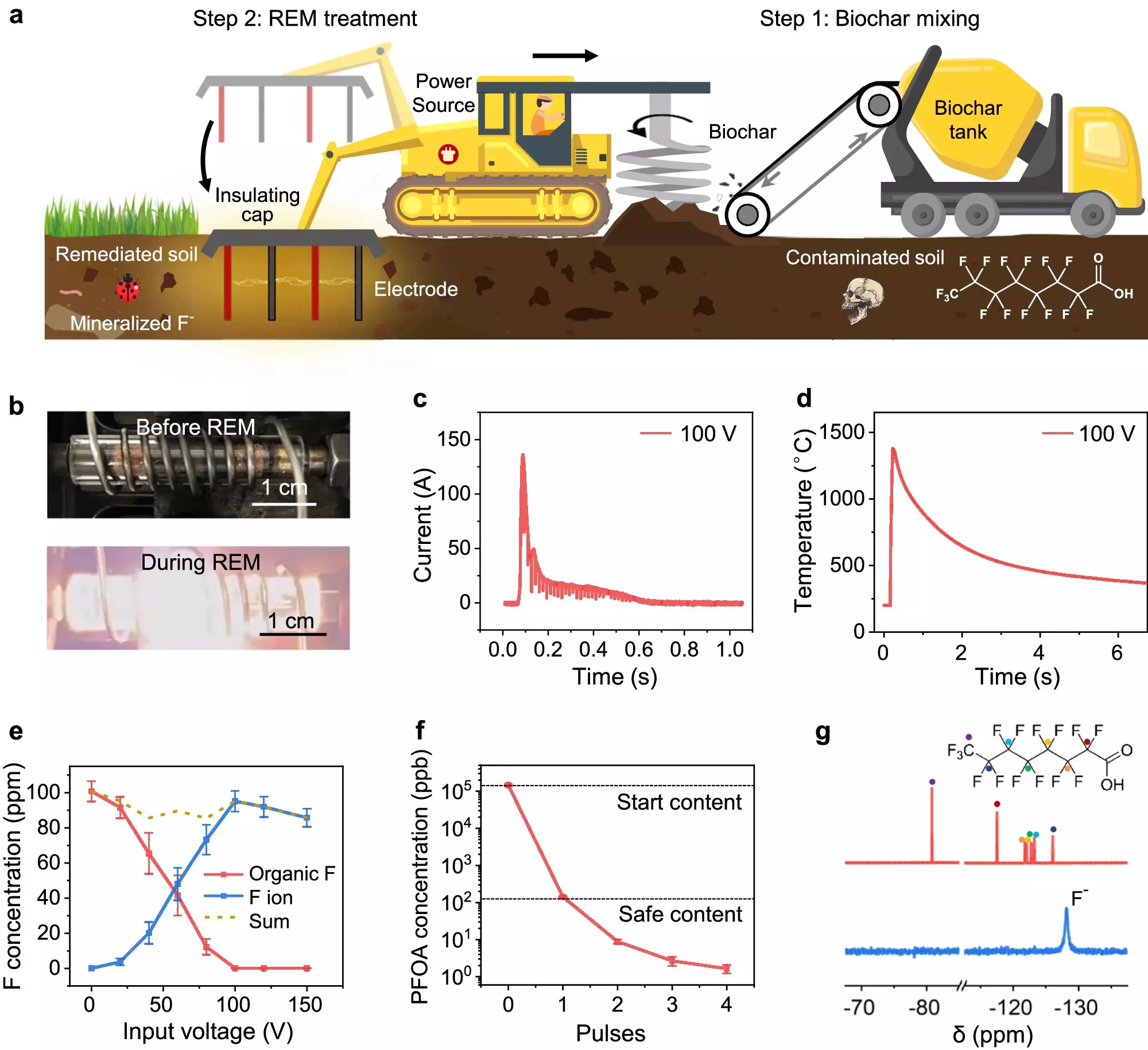Imagine a world where synthetic chemicals that contaminate soil and pose a threat to the environment can be remediated in seconds. Thanks to the groundbreaking work of Rice University chemist James Tour and his research team, this dream is turning into a reality. In a recent study published in Nature Communications, the team introduced the rapid electrothermal mineralization (REM) process, a game-changing solution for the removal of per- and polyfluoroalkyl substances (PFAS) that can accumulate in soil.
PFAS, known as persistent and bioaccumulative pollutants, are a group of synthetic chemicals that resist heat, oil, water, and grease. These substances are commonly found in consumer products like firefighter foam, food packaging, carpeting, cleaning products, paper, and paint. The accumulation of PFAS in soil not only threatens the environment but also poses risks to human health. Traditional methods for breaking down PFAS have proven to be inefficient and energy-intensive, often failing to eliminate these contaminants effectively.
The REM process utilizes electrical inserts in the ground along with biochar, an environmentally friendly conductive additive, to heat contaminated soil rapidly to temperatures exceeding 1,000°C in just seconds through a direct current pulse. This intense heat transforms PFAS into calcium fluoride, a harmless mineral, by leveraging the natural calcium compounds present in the soil. With removal efficiencies of over 99% and mineralization ratios exceeding 90%, the REM process offers a highly effective and environmentally friendly solution for soil remediation.
James Tour, the lead researcher behind the REM process, emphasized the significance of this innovation in transforming PFAS into nontoxic materials. The process not only eliminates harmful contaminants but also enhances soil health by preserving essential soil properties and promoting nutrient supply and arthropod infiltration. This breakthrough builds on previous successes of electrothermal heating in vaporizing heavy metals and converting organic pollutants into benign materials, showcasing the versatility and potential of the REM process.
The REM process distinguishes itself through its speed, efficiency, scalability, and environmental benefits. By reducing energy consumption, greenhouse gas emissions, and water usage compared to traditional remediation methods, REM offers a more sustainable and cost-effective approach to soil remediation. With the capacity to process up to 2 kilograms of soil per batch at the lab scale, the REM process shows promise for larger-scale applications currently in development.
The REM process represents a significant advancement in the field of soil remediation, offering a practical and innovative solution to address the growing concerns of PFAS contamination. James Tour and his research team have laid the foundation for a more sustainable and environmentally friendly approach to tackling soil pollutants, setting the stage for a brighter and cleaner future for our planet.


Leave a Reply